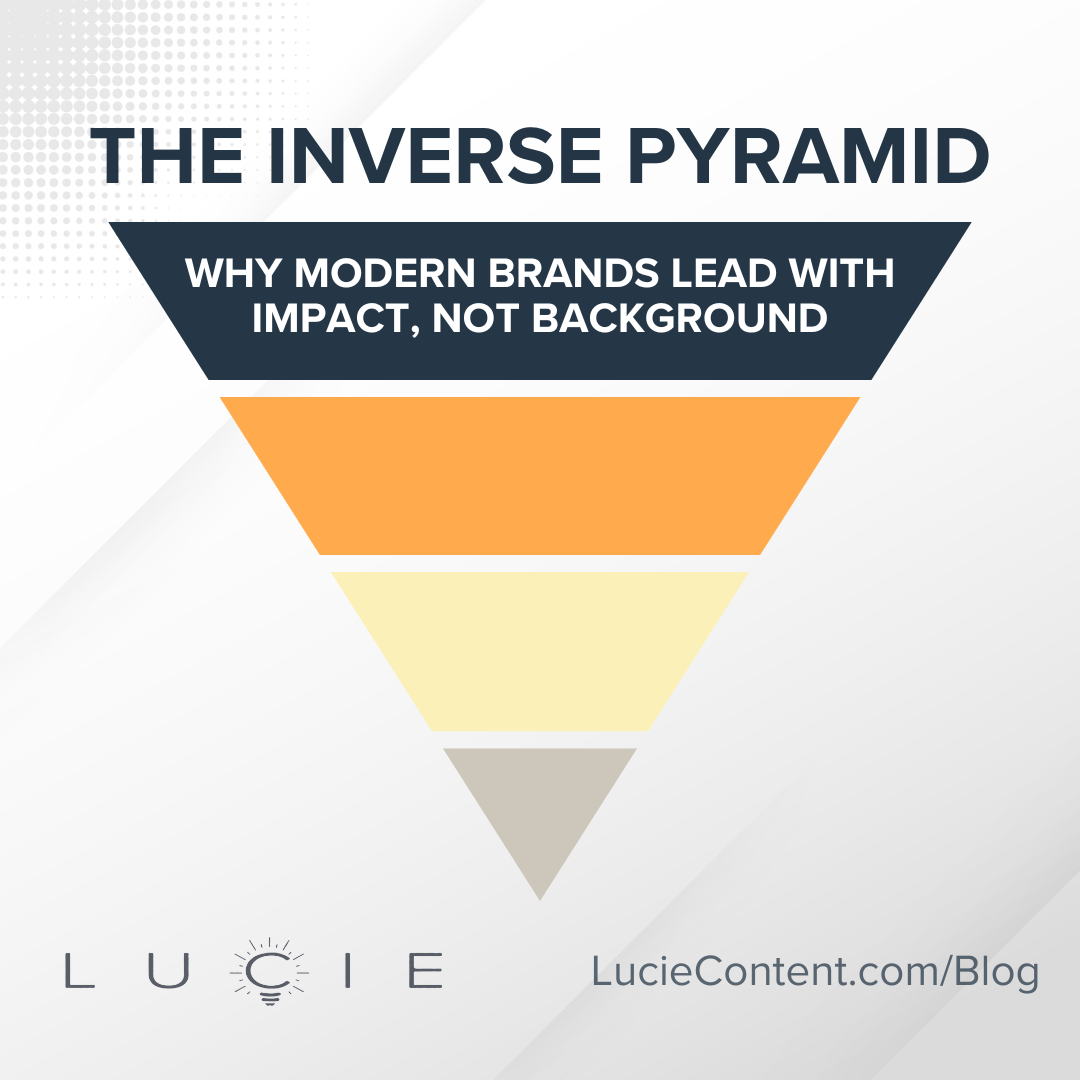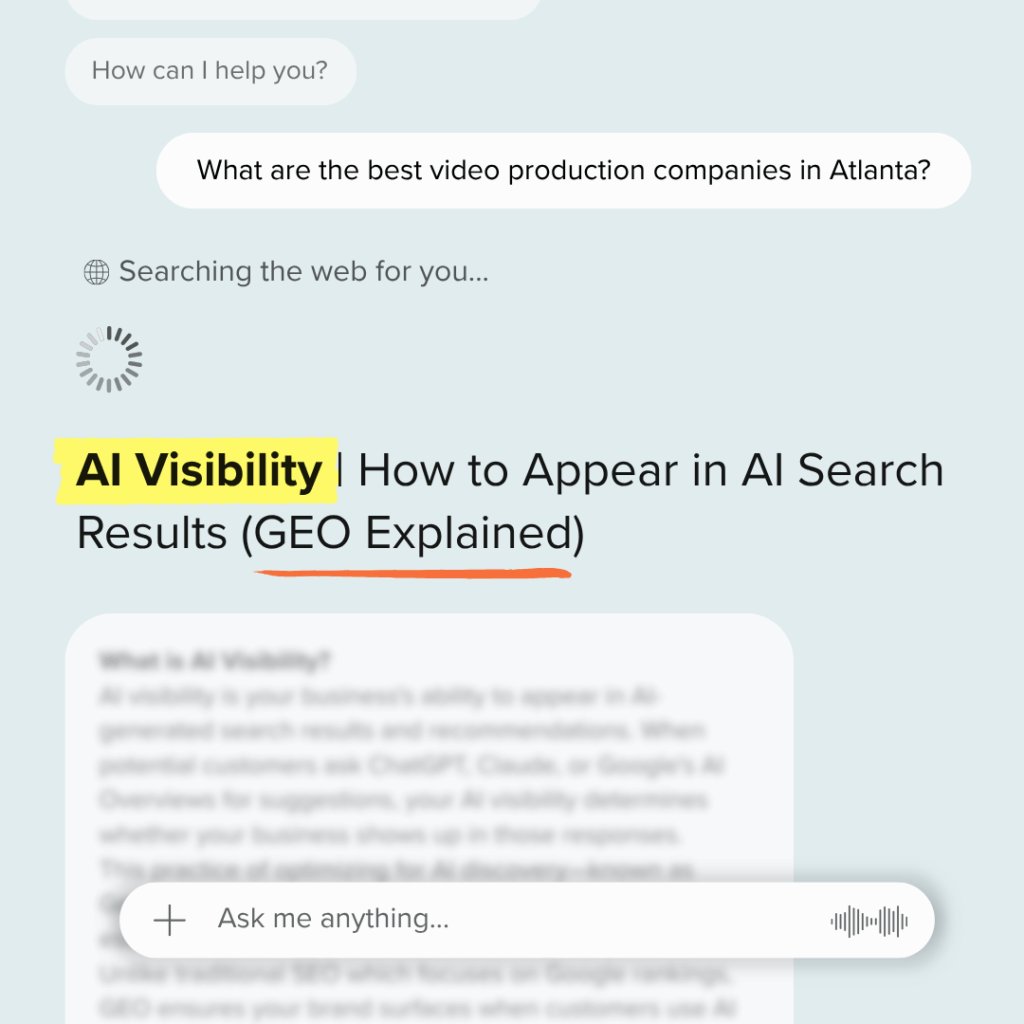What is the Inverse Pyramid in Brand Storytelling?
The inverse pyramid is a content strategy where brands lead with their most compelling visual and narrative elements first, rather than gradually building up to them. This approach places the strongest impact at the beginning to immediately capture audience attention in today’s fast-paced digital landscape.
Your audience will decide whether to keep watching your content within the first three seconds. Not three minutes, three seconds.
Here’s the reality we’re facing now: traditional storytelling meant taking your audience on a journey. You’d set the scene, introduce characters, build tension, and deliver the payoff at the climactic moment. That approach worked beautifully back when people had time to spare and attention spans to match.
That traditional storytelling pyramid has been flipped completely upside down, and the brands that haven’t caught on are losing viewers faster than they can count them.
The Death of the Patient Viewer
Over the past five years working with Atlanta businesses and national brands, we’ve watched this shift happen in real time. Audiences no longer have the patience for slow reveals or gradual builds. They want to know immediately why they should care about your message.
Think about the last time you scrolled through your social media feed. How many videos did you watch all the way through versus how many you swiped past in the first few seconds? The content that stopped your scroll didn’t ease you in gently. It hit you with something compelling right from frame one.
This behavioral change has forced us to completely rethink how we approach corporate video production for our clients. The old rules of building suspense and saving the best for last simply don’t work anymore.
Why Leading with Your Strongest Elements Actually Works Better
Working with hundreds of corporate video productions, we’ve learned that when you lead with your most compelling content, you’re not spoiling the surprise. You’re earning the right to tell the full story.
Our team has found that starting with impact creates what we call “earned attention.” Instead of hoping viewers will stick around long enough to get to the good stuff, you show them the good stuff first, which makes them want to understand how you got there.
Take one of our recent projects with a technology startup. Instead of opening their company video with background information about their founding story, we led with a dramatic visual of their product solving a real problem in under ten seconds. The result? Viewers stayed engaged through the entire three-minute piece because they were invested in understanding the story behind that initial impact.
This approach works because it aligns with how modern audiences consume content. They’re not browsing, they’re scanning. They’re not settling in to watch, they’re deciding whether something deserves their attention.
The Four Elements of Effective Inverse Pyramid Storytelling
Working across different industries, we’ve identified four key components that make this approach successful:
Visual Hook First
Your strongest visual element needs to appear within the first five seconds. This isn’t just about pretty cinematography. It’s about showing the outcome, the transformation, or the solution before explaining how you get there. Our production team has learned that the most engaging content often starts with the “after” shot, not the “before.”
Immediate Value Proposition
Within the first fifteen seconds, viewers should understand what’s in it for them. Whether it’s entertainment, education, or inspiration, that value needs to be crystal clear from the start. We’ve found that brands that wait until the middle or end of their content to reveal the benefit lose a significant portion of their audience before they get there.
Emotional Resonance Over Information
Facts tell, but emotions sell. Leading with an emotional connection (whether it’s excitement, curiosity, or even concern) creates a stronger foundation than leading with background information. When people feel something first, they become more receptive to the logical arguments that follow.
Strategic Information Layering
Just because you lead with impact doesn’t mean you abandon context entirely. The key is revealing information strategically throughout the content, always in service of the main message rather than as a prerequisite to it.
Industry Applications: Where We’ve Seen This Work
Healthcare and Professional Services
For healthcare providers and professional service firms, we’ve found that starting with patient outcomes or client success stories immediately establishes credibility. Instead of opening with credentials and years of experience, showing the results first makes those qualifications feel more meaningful when they’re revealed later. Learn more about creating powerful Day in the Life videos that showcase real outcomes.
Technology and Innovation
Tech companies that lead with their product in action, solving real problems, capture attention far more effectively than those that start with market research or company history. We’ve produced several case studies where this approach was shown to increase viewer retention.
Retail and E-commerce
Product videos that show the end result (the lifestyle, the transformation, the satisfaction) before explaining features and specifications perform significantly better across all platforms.
The Production Reality: Why This Approach Requires More Planning
Leading with impact is actually more complex to execute than traditional storytelling. It requires our production team to think backwards through every element.
During pre-production, we have to identify not just what story we want to tell, but what single moment or visual will make someone stop scrolling. This means understanding your audience’s motivation at a much deeper level than before. Our content grab process is specifically designed around this strategic approach to maximize every filming moment.
The technical execution becomes more challenging too. That opening shot or sequence needs to be meticulously planned because it’s carrying the weight of the entire piece. There’s no room for “we’ll figure it out in post-production” when everything depends on those first few seconds.
Our team at Lucie Studios has developed specific workflows for this approach. We script backwards, shoot with the ending in mind, and edit with ruthless focus on maintaining that initial impact throughout the piece.
Common Mistakes We See Brands Make
Even when brands understand the inverse pyramid concept, execution often falls short. Here are the most frequent issues we encounter:
Confusing Shock Value with Impact
Being attention-grabbing and being impactful aren’t the same thing. We’ve seen brands open with dramatic visuals that have nothing to do with their actual message. The result is confused viewers who feel misled.
Revealing Too Much Too Fast
There’s a delicate balance between leading with impact and giving away everything in the first ten seconds. The goal is to create intrigue, not to eliminate all reason to keep watching.
Neglecting the Follow-Through
Leading with your strongest element creates expectations for the rest of the content. If the opening is powerful but the middle section drags, you’ve actually made the problem worse, not better.
Beyond Video: Applying This to All Brand Communication
While we’re naturally focused on video marketing and production, this principle extends to all forms of brand communication. Website headers, social media posts, email campaigns, and even sales presentations benefit from leading with the strongest element first. This principle aligns perfectly with finding your brand’s authentic social voice and creating website headers that immediately capture attention.
The key is understanding that attention is now the scarcest resource, not time or information. Your audience has access to unlimited content, but limited attention. Respecting that reality is what separates effective brand communication from content that gets ignored.
Making the Shift: What This Means for Your Brand
Adopting the inverse pyramid approach requires more than just rearranging your content. It demands a fundamental shift in how you think about audience engagement. Instead of assuming people will give you time to build your case, you have to earn that time upfront.
This doesn’t mean abandoning storytelling entirely. It means restructuring your story to honor the reality of modern attention spans while still delivering the depth and meaning your brand requires.
The brands that master this approach don’t just capture attention, they command it. They create content that people actively choose to engage with rather than passively consume.
Ready to Flip Your Approach?
The inverse pyramid isn’t just a trend. It’s a fundamental shift in how effective communication works in the digital age. The question isn’t whether your audience’s attention span will continue to shrink (it will), but whether your brand will adapt to meet them where they are.
At Lucie Content, we’ve built our entire Atlanta video production approach around this reality. From strategy sessions to final delivery, we focus on creating content that earns attention rather than assuming it.
Want to see how the inverse pyramid approach could transform your brand’s storytelling? Let’s discuss how leading with impact could change everything for your next campaign. Contact our team to explore what’s possible when you put your strongest foot forward from the very first frame.
Frequently Asked Questions
Q: Does the inverse pyramid approach work for all types of video content? A: While it’s particularly effective for marketing and brand content, the principle can be adapted for most video types. Educational content might lead with the key learning outcome, while testimonials can start with the most powerful client result.
Q: How do we maintain authenticity while leading with our strongest elements? A: Authenticity comes from being genuine about your capabilities and results, not from following a specific narrative structure. The inverse pyramid simply changes when you reveal information, not whether that information is truthful.
Q: Can this approach work for longer-form content like webinars or documentaries? A: Absolutely. Even longer content benefits from a compelling opening that establishes value immediately, though you have more time to develop the story once you’ve earned initial attention.












